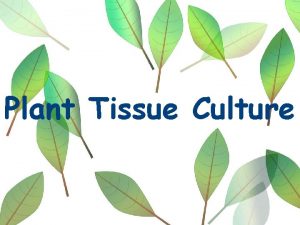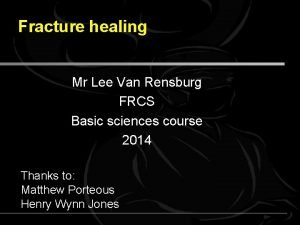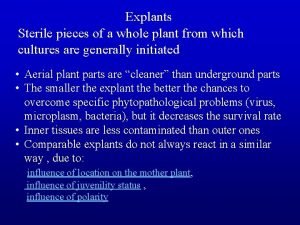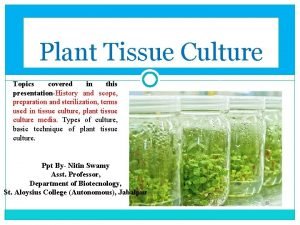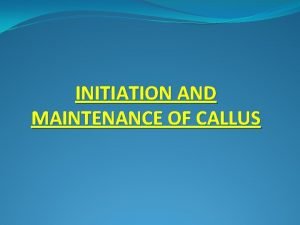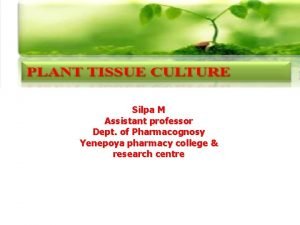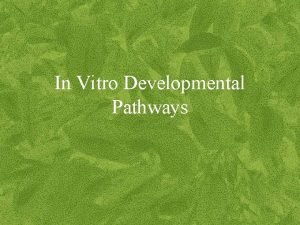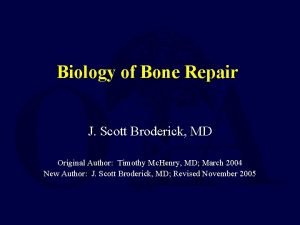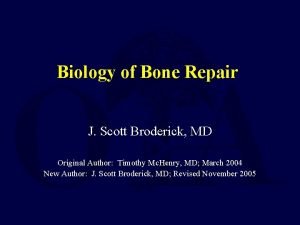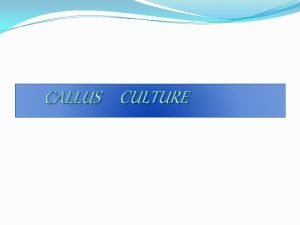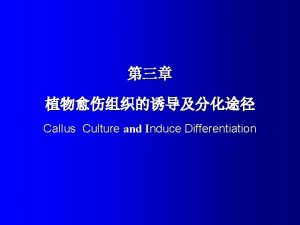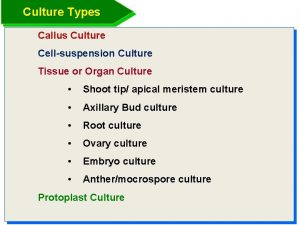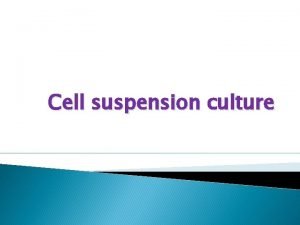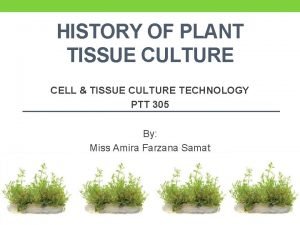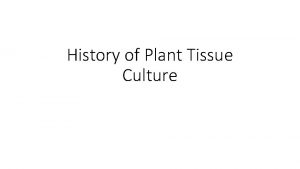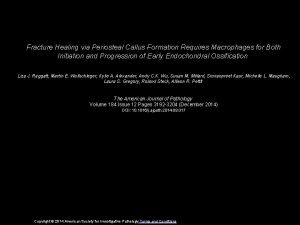HISTORY OF TISSUE CULTURE INTRODUCTORY HISTORY Callus formation










- Slides: 10

HISTORY OF TISSUE CULTURE

INTRODUCTORY HISTORY Callus formation from the decorticated elm tree. Henri - Louis Duhamel du Monceau’s (1756) Totipotency “Each living cell is capable of developing independently if provided with proper conditions. ” Cell is capable Schewann of autonomy theory and (1839) demonstrated the potential for totipotency. This very old work was foreword for the discovery of plant tissue culture. 1. The development of the multicellular or multiorganed body of a higher organism from a singlecelled zygote supports the totipotent behavior of a cell. 2. Germination of spores into complete individuals (Haplobiontic plants) 3. Epidermal cells of Begonia are transformed into new begonia plants.

Engraving of Henri-Louis Duhamel du Monceau by François-Hubert Drouais. Duhamel du Monceau was the first to describe callus formation that he observed growing over the wound of an elm tree.

Callus formation

Theodor Schwann (7 December 1810 – 11 January 1882) was a German physiologist. His many contributions to biology include the development of cell theory.

Performed experiment on callus formation by decorticated trees such as Robinia, Pawlonia and Ulmus. Trecul (1853) Obtained very flourishing callus from Vochting (1878) Brassica rapa and proposed the polarity in development of buds from the upper portion and roots or callus and from the lower portion of a stem piece Described callus formation on isolated stem fragments and root slices. Concept of in vitro Cell Culture Rechinger (1893) Culture of Embryogenic tissue Hannig (1904) Gottlieb Haberlandt (1902) (Father of Tissue Culture)

Gottlieb Haberlandt first pointed out the possibilities of the culture of isolated tissues, plant tissue culture. His original idea presented in 1902 was called totipotentiality: “Theoretically all plant cells are able to give rise to a complete plant. ”

Development of Tissue Culture Role of Auxin Discovery of Cytokinin Root-tip Culture White (1934, 1937) Embryo Culture Van Overbeek et al. (Use of coconut milk i. e. (1941) embryo sac fluid) Stem-tip Culture Loo (1945) Ball (1946) Cambium cells of some tree species Gautheret (1939) Tumor tissues of hybrid White (1939) Carrot slices Nobecourt (1939) Skoog (1955) Miller et al. (1955)

Hormonal Control of Organ Formation Skoog and Miller (1957) Improvement of Media Murashige and Skoog (1962) Preparation and Cloning Bergmann (1960) of Single Cell Cultures Regeneration of Single Cell to Whole Plant Regenerated plantlets Vasil (1965) Somatic embryogenesis Steward (1966) Kohlenbach (1966)

*All these discoveries contributed to the establishment of totipotency of somatic cells under experimental conditions, thereby accomplishing the goals set by Haberlandt.
